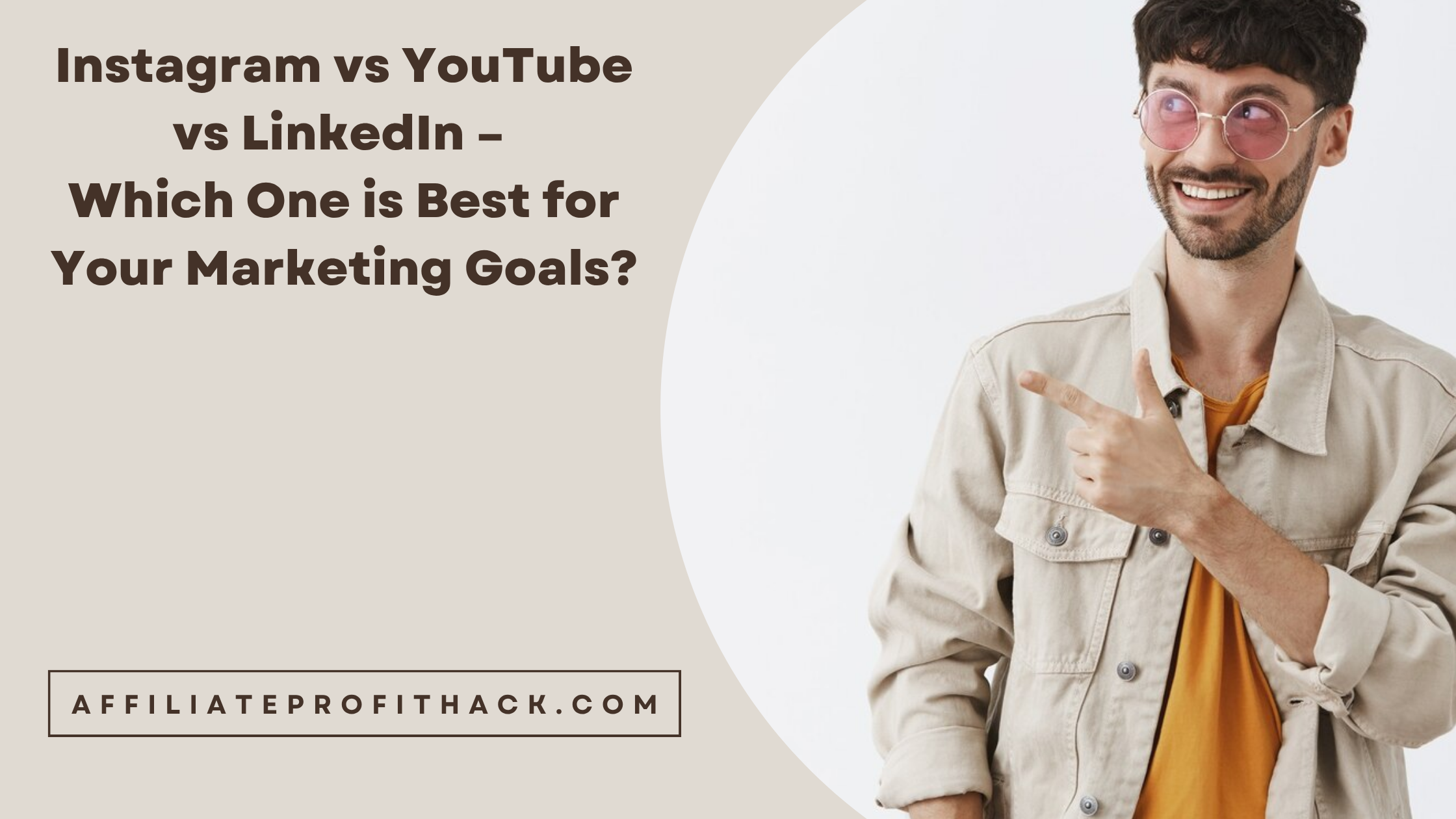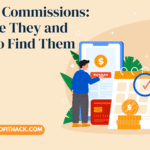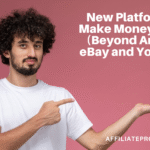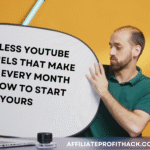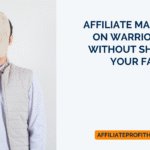Welcome to my article “Instagram vs YouTube vs LinkedIn – Which One is Best for Your Marketing Goals?”.
Let’s be honest—choosing the right platform for your marketing can feel like standing at a buffet with too many good options and no clue where to start. Instagram is stylish and fast-paced, YouTube is deep and detail-oriented, and LinkedIn walks in with a briefcase and a PowerPoint. They all work, but not necessarily for you. The real question is: which one actually aligns with your marketing goals, business model, and bandwidth?
Spoiler alert: there’s no one-size-fits-all answer. Each platform plays a different role in the marketing ecosystem. Instagram is fantastic for building brand presence and community, YouTube is unbeatable for long-form content and search visibility, and LinkedIn is where B2B magic happens—if you know how to speak the language of value and credibility. In this blog, we’ll break down the strengths of each platform, help you identify which one matches your business goals, and—most importantly—save you from spreading yourself thin across platforms just because “everyone else is doing it.” If you’re tired of throwing content into the void and hoping something sticks, you’re in the right place. Let’s figure out where your content actually belongs—and how to make it count.
My Best Recommended & Proven Way to Make $100-$300 Daily – Watch This FREE Video to START >>>

Understanding the Strengths of Each Platform
Before you start filming Reels, editing YouTube videos, or polishing your LinkedIn headline like it’s a résumé from 2006, it’s crucial to understand what each platform actually does well. Think of it like assembling a team—you wouldn’t ask your graphic designer to write sales copy (unless you enjoy Comic Sans in your email funnel). Each platform plays a different role in your marketing ecosystem.
Instagram is the showstopper. It thrives on aesthetics, visual storytelling, and bite-sized content. It’s ideal for brands that rely on strong visuals—think fashion, fitness, food, or basically anything that photographs well. With features like Reels, Stories, and Carousels, Instagram is your go-to for quick engagement and building a loyal community. But it’s a crowded party. If you don’t have a content plan (or at least a ring light), you’ll get lost in the noise.
YouTube is the wise old sage. It rewards depth, consistency, and content that solves real problems. Unlike Instagram, where your content disappears faster than a politician’s promise, YouTube videos have a long shelf life—often ranking on Google for years. It’s a great place to build authority, educate your audience, and show up in searches when someone types “how to fix my terrible ad campaign.” But fair warning: the learning curve is real. Lighting, editing, scripting—it’s not for the faint of heart (or those with commitment issues).
LinkedIn, on the other hand, is the networking event you actually should attend. It’s less about filters and more about facts. This platform is ideal for B2B businesses, consultants, and professionals who want to attract high-intent leads or position themselves as thought leaders. If you enjoy meaningful conversations (and the occasional humblebrag), LinkedIn will treat you well—just don’t show up posting memes with dancing cats.
Instagram: Visual Branding & Community Building
If Instagram had a job title, it would be Chief Vibe Officer. It’s the platform where branding isn’t just encouraged—it’s expected. Everything from your profile photo to the fonts in your Stories says something about your business. And if it doesn’t? Well, the algorithm will quietly escort your post out of the room while promoting someone else’s aesthetic brunch photo instead.
At its core, Instagram is built for visual branding. It lets you tell your brand story without writing an essay. Colors, layouts, filters, and consistent design choices help create an identity people recognize at a glance. This is where businesses win by showing—not just telling—what they’re about. Whether it’s behind-the-scenes snippets, product showcases, or motivational quotes that somehow always hit a nerve on a Monday morning, Instagram helps you shape your image in real-time.
My Best Recommended & Proven Way to Make $100-$300 Daily – Watch This FREE Video to START >>>
Now let’s talk community building—because Instagram isn’t just a gallery, it’s a two-way street (minus the awkward small talk). Features like Stories, DMs, Polls, and Q&As make it ridiculously easy to interact with your audience. You’re not just throwing content into the void—you’re inviting conversation. The platform encourages quick feedback, reactions, and even collaboration through Lives and Reels. People follow brands they feel connected to, not just the ones that post pretty pictures.
But here’s the catch: Instagram moves fast. Today’s trending audio is tomorrow’s cringe memory. If you want to stay relevant, you’ve got to be consistent, creative, and just a bit shameless when it comes to showing up. The algorithm loves activity, and so do your followers—especially when they feel like they’re part of something bigger than a sales funnel.
In short, Instagram is where your brand becomes a personality. And if you play it right, that personality builds a loyal tribe who not only follows—but engages, shares, and buys.
YouTube: Long-Form Content & Evergreen Visibility
If Instagram is the extrovert who thrives on short, snappy convos, YouTube is the thoughtful friend who sits you down for a deep chat over coffee—and then casually drops life-changing advice in the middle of a 12-minute video.
YouTube is built for long-form, value-packed content. It rewards creators who can teach, entertain, or explain without rushing to beat the 60-second timer. Tutorials, reviews, storytelling, deep dives—you name it, YouTube’s got room for it. And unlike other platforms where your content expires faster than milk in the summer, YouTube videos stick around. With the right title and keywords, your video from 2021 could still be pulling in traffic and leads in 2025. That’s what we call evergreen visibility.
The magic of YouTube is in its dual power: it’s both a search engine and a social platform. People aren’t just scrolling for entertainment—they’re actively looking for solutions. That means your content shows up to an audience already interested, already searching, and often already halfway to a purchase decision. If you’re a coach, educator, product creator, or just someone with wisdom to share, YouTube gives you a stage—and a search bar to help people find you.
Now, here’s the reality check: YouTube takes effort. You’ll need to learn basic scripting, video editing, thumbnails that don’t scream “PowerPoint,” and of course, mastering the fine art of not hating your own voice on playback. But once you get into the rhythm, it becomes a content machine. One good video can work harder for you than 50 Instagram posts combined.
So, if you are ready to play the long game—and be found long after you hit upload—YouTube might just be your best digital asset. Just don’t forget your tripod.
LinkedIn: B2B Networking & High-Intent Leads: Long-Form Content & Evergreen Visibility
If Instagram is the life of the party and YouTube is the wise storyteller, LinkedIn is the one who showed up in a blazer and brought their own business cards. This is the platform where people actually want to talk shop. It’s less about filters and more about frameworks. Less dancing, more data. And trust me, no one’s here for your breakfast photos—unless it came with a 3-step productivity tip.
At its core, LinkedIn is a B2B powerhouse. It’s where decision-makers, professionals, and business owners hang out, network, and yes—look for solutions. The users on LinkedIn aren’t just scrolling to kill time. They’re scrolling to connect, collaborate, and sometimes, even convert. That means your content doesn’t just entertain—it builds trust, authority, and often opens doors to actual business opportunities.
My Best Recommended & Proven Way to Make $100-$300 Daily – Watch This FREE Video to START >>>
The beauty of LinkedIn is in the intent. People on this platform are in a different mindset. They’re thinking about goals, growth, and revenue—not trending sounds or funny memes. So when you post content that speaks directly to their problems—whether it’s a carousel, a mini case study, or a value-packed text post—you attract an audience that’s actually ready to take action. We’re talking high-quality leads, not just likes from your college roommate.
And let’s not forget the algorithm. LinkedIn’s reach is surprisingly generous (especially compared to Instagram’s “post and pray” method). A well-crafted post can keep circulating for days—sometimes even weeks—especially if it sparks conversation. Add a thoughtful comment here and there, engage with your niche, and suddenly your profile starts working like a sales funnel in disguise.
Bottom line? If you’re in the business of selling services, offering consulting, or building authority in your industry—LinkedIn is not optional. It’s where conversations turn into conversions. Just don’t show up sounding like a brochure. Speak like a human, share like a leader, and the right people will pay attention.
Which Platform Is Best for Your Marketing Goals?
By now, you have probably realized that choosing between Instagram, YouTube, and LinkedIn isn’t about which one is coolest—it’s about which one actually gets you closer to your marketing goals. Because let’s be honest, just being “active on social media” isn’t a strategy. It’s digital cardio. You’re moving a lot, but not necessarily going anywhere.
So here’s the breakdown:
- If your goal is brand awareness and community building, Instagram is your playground. It’s perfect for showing off your brand personality, connecting with followers in real time, and keeping your audience engaged with fast, fun content. Just remember—it’s a visual-first platform. If you hate creating graphics or showing up on video, you’ll need a solid content plan (or a really good coffee habit).
- If you want to build authority and drive long-term traffic, YouTube is the gold mine. It’s ideal for educating your audience, showcasing your expertise, and ranking on both YouTube and Google. It takes more effort upfront, but the payoff is that your videos keep working for you long after you’ve moved on to your next launch or vacation. Evergreen content = digital compound interest.
- If you’re focused on B2B leads, high-ticket offers, or thought leadership, LinkedIn is where the serious conversations happen. It’s less crowded, more intentional, and full of people who are actively looking for solutions—not just scrolling for dopamine hits. Share insights, start discussions, and you’ll build credibility faster than you can say “let’s hop on a call.”
Still tempted to “do it all”? Fair warning: trying to master every platform at once is the fastest way to create content fatigue and achieve mediocre results everywhere. Start with the one that best aligns with your strengths and your audience. Once you’ve got momentum, you can always branch out—strategically, not out of FOMO.
Pick your platform, focus your energy, and let your content do the heavy lifting.
Conclusion
At the end of the day, your marketing strategy isn’t about being everywhere—it’s about being effective where it matters. Instagram, YouTube, and LinkedIn each bring something powerful to the table, but they serve different purposes, attract different audiences, and demand different types of content. It’s not a popularity contest—it’s about alignment.
If you’re a visual storyteller who loves fast-paced engagement and showing off your brand’s personality? Instagram is your jam.
If you’ve got knowledge to share, don’t mind talking to a camera, and want your content to work for you long after it’s published? YouTube is the long game you should be playing.
And if you’re a service provider, coach, consultant, or B2B pro looking to build authority and attract high-quality leads? LinkedIn is your digital boardroom—suit optional.
My Best Recommended & Proven Way to Make $100-$300 Daily – Watch This FREE Video to START >>>
Here’s the best part: you don’t have to guess. You just need to choose a platform that matches your strengths and audience, commit to it for the next 90 days, and track the results. No hopping around, no random posting, and definitely no trying to be the next viral sensation on all three platforms at once (unless you secretly enjoy stress).
The right platform is less about where everyone else is and more about where your people are. Find that space, show up with value, and let your content speak for you—even while you sleep.
Now go forth, pick your platform—and market like you mean it.
Thank you for reading my article “Instagram vs YouTube vs LinkedIn – Which One is Best for Your Marketing Goals?” till the end. Hope it helped you. See you with another article.
